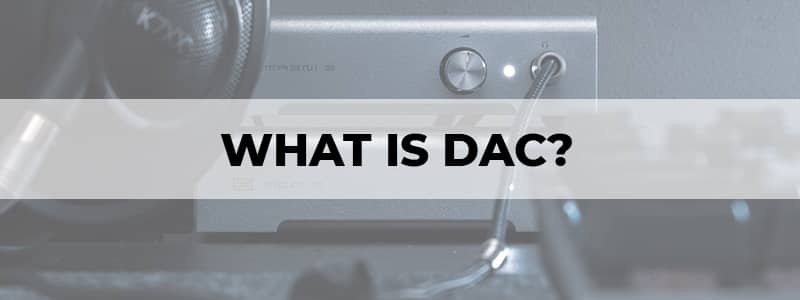
The first question to ask when trying to figure out “what is DAC?” is, well, what is DAC? It’s something that can be confusing and off-putting to newcomers to the world of audio, and even frustrating and challenging to seasoned audiophiles.
It can be looked at in very basic terms, however. A DAC is simply a digital-to-analog converter, and in this article, we’ll make sure you understand what is DAC, the best DAC to choose, and the considerations involved in making sure a DAC works for you.
What is DAC?
Digital information is information that is made up of 1s and 0s – “on” or “off” signals, respectively, which can make an infinite number of things happen through electrical impulses. Analog, on the other hand, is physical, moving, continuous. Someone talking to you is an analog signal from an analog source. You hearing a recording of someone talking is a digital source being received as analog information.
A DAC then converts digital (audio) to analog. You are always using a DAC at any given moment when you’re playing out anything from your phone, a TV box, your Xbox, a DVD player, an MP3 player, and so on. All of these devices store the audio as digital files that, without conversion, don’t mean anything useful or entertaining, and that’s where the DAC comes in.
Why Should I Know More About DAC?
DACs are an important thing to learn about because a sub-optimal one can bring down your whole system. Laptops with poor audio can sometimes have a cheap USB DAC, and high-end home audio systems have the best DACs. The USB-computer connection method is probably the most common and popular, whereas CD or DVD players use Optical and Coaxial cables to get the digital feeds.
It’s also important to note that headphones do not directly connect to the DAC, and that is why headphones amp are also a big deal in the audio community, and why looking into the best headphone amp is also worthwhile. DACs in fact cannot send “power” to any audio output device by themselves, technically, although there are options with included amps, which can also be large internal amps (frequently advertised as stereo amps with included DACs, since those amps become the main focus).
Using a Stand-Alone DAC VS a Built-In DAC
Presumably, these devices we’ve been talking about already include a DAC, to the point that you’ve likely never had to buy one, get it replaced, or even had to ask yourself the titular question (“What is DAC?”).
If that’s the case, then what’s the point of an external DAC (such as the Schiit Modi 3)?
The source device is used for playback, in the way that we explained earlier. A separate device – an external DAC – would then allow for more processing power for conversion (a cleaner implementation of the DAC chip): a circuit is made complete by each separate part, and so an external DAC (one whose quality you can control by deciding which one to get, which one works best for you, and which one is most appropriate for your device, and so on) increases the quality of the performance of your device and adds to the quality of the audio you hear.
In fact, making the switch from the built-in system’s onboard DAC to an external DAC (or better, a dedicated DAC/headphone amp combo), you’ll be able to see the difference, clear as day.
What to Look For in a DAC?
First, let us state straight off the bat what’s largely irrelevant: the sample rates and bit depths that DACs advertise. These alone don’t affect the sound quality, at least not as much as the DAC chip that’s in use as well as the quality of the system’s internal components.
These are all tuned differently, and each component makes a difference in the conversion process.
This is why some systems introduce some sort of noise, or a hiss, to the sound. This can also explain the muffled sound, or sound that sounds like its distorted and blaring-y.
A good DAC, however, makes a world of difference, and you can even test this on the go. Some pocket-size DACs can even hook up to your phone via Bluetooth, and there are Wi-Fi streaming DAC options, too.
Ultimately, a DAC completely revolutionizes your audio experience should you care to make that leap. Unless you don’t listen to music or don’t need to use your laptop or phone for any audio-intensive activity at all, it’s a worthwhile investment to make, both with your time and money.
